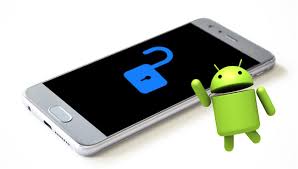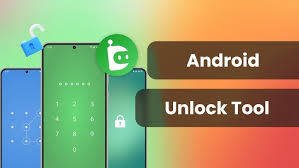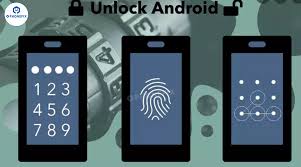Smartphones are essential in today’s world, serving as our communication hubs, digital wallets, cameras, and personal assistants. However, they come with security features like lockscreens, carrier restrictions, and user verification methods to protect the user’s data and limit unauthorized access. When someone forgets their password or wants to switch carriers, a phone unlock tool becomes useful.
In this article, we’ll dive deep into what phone unlock tools are, how they work, the types available, their legality, risks, and everything else you need to know before using one.

Table of Contents
What Is a Phone Unlock Tool?
A phone unlock tool is a piece of software or hardware used to remove restrictions on a mobile device. These restrictions may include:
- SIM Carrier Lock: The phone is locked to a specific mobile network (e.g., AT&T, T-Mobile).
- Screen Lock: Forgotten password, PIN, pattern, or biometric lock (fingerprint, face unlock).
- FRP (Factory Reset Protection): Google or Apple account protection after a factory reset.
- iCloud Lock (Activation Lock): Apple’s lock to prevent unauthorized access to stolen devices.
- Bootloader Lock: Limits custom ROM installation on Android devices.
Why Would Someone Need a Phone Unlock Tool?
There are several legitimate and everyday reasons someone might need to unlock their phone:
- Switching mobile carriers without buying a new phone.
- Selling or gifting an old phone.
- Recovering access after forgetting a password or pattern.
- Removing business or school-related MDM (Mobile Device Management) restrictions.
- Gaining full control over the device (especially for developers and enthusiasts).
Types of Phone Unlock Tools
Phone unlocking tools vary depending on the platform (Android vs. iOS) and the type of restriction they’re designed to bypass.
1. SIM Unlock Tools
Purpose: Remove the carrier lock so the phone can be used with other networks.
Popular Tools:
- DoctorSIM
- UnlockBase
- DirectUnlocks
- IMEIUnlockSIM
How It Works:
These tools typically use the device’s IMEI number (a unique identifier) to generate an unlock code. This process is usually done remotely, and in many cases, it is officially supported by the carrier.
Pros:
- No software installation needed.
- Maintains warranty.
- Legal in most countries.
Cons:
- May cost money.
- Only works if the phone is eligible for unlock.
2. Screen Lock Removers
Purpose: Bypass or remove forgotten screen locks like PIN, password, pattern, fingerprint, or face ID.
Popular Tools:
- Dr.Fone – Screen Unlock
- iMyFone LockWiper
- Tenorshare 4uKey
- PassFab Android Unlocker
- Samsung FRP Helper
How It Works:
These tools typically connect to the device via USB. They boot the phone into recovery or download mode, wipe the security settings, and restore access.
Pros:
- Works even if the phone is locked.
- Supports multiple types of lock (PIN, fingerprint, etc.).
- Easy to use with minimal tech knowledge.
Cons:
- Often erases data.
- May not support the latest phones or OS versions.
- Risk of bricking the device if used incorrectly.
3. FRP Bypass Tools (Factory Reset Protection)
Purpose: Bypass Google Account verification after a factory reset on Android phones.
Popular Tools:
- FRP Hijacker
- Octopus FRP Tool
- GSM Flasher Tool
- Pangu FRP Unlocker
- Samsung FRP Bypass APK
How It Works:
These tools exploit vulnerabilities or use USB debugging to bypass the verification step that asks for the last Google account synced with the device.
Pros:
- Allows access to the device after a reset.
- Useful for second-hand or recycled phones.
Cons:
- Can be seen as a security threat.
- Not guaranteed to work on all brands or models.
- Risky if downloaded from untrusted sources.
4. iCloud Unlock Tools (Apple Devices)
Purpose: Remove iCloud activation lock, which prevents access to iOS devices without Apple ID login.
Popular Tools:
- Tenorshare 4MeKey
- iRemove Tools
- CheckM8
- iBypasser
How It Works:
iCloud bypass tools attempt to deactivate the Apple ID lock by exploiting system loopholes or using custom firmware tools like checkra1n (based on iOS jailbreaks).
Pros:
- Can make an unusable device functional again.
- Works on many older iOS versions.
Cons:
- Often illegal or grey-area use.
- May void warranty or disable features like calling and iCloud sync.
- Can be flagged by Apple as stolen or lost.
5. Bootloader and OEM Unlocking Tools
Purpose: Unlock Android bootloaders to allow custom firmware, root access, or developer features.
Popular Tools:
- ADB & Fastboot
- Xiaomi Mi Unlock Tool
- Samsung Odin Tool
- OnePlus Unlock Tool
How It Works:
These tools communicate with Android devices in bootloader mode and send commands to unlock system restrictions, allowing ROM flashing or root access.
Pros:
- Ideal for developers and tech enthusiasts.
- Enables full control over the device.
Cons:
- Voids warranty.
- Erases all data.
- Increases risk of bricking or malware.
Legal Considerations
Is unlocking a phone legal?
The Answer: It Depends
- In the U.S.: It’s legal to unlock your phone (thanks to the Unlocking Consumer Choice and Wireless Competition Act), as long as the device is not stolen and you meet carrier terms.
- In the EU and UK: Unlocking is generally allowed, but must follow the contract or provider guidelines.
- In other countries: Laws vary, and in some places, using third-party unlocking tools may be illegal or restricted.
Important: Bypassing iCloud or FRP without ownership proof may be considered unauthorized access and could be punishable by law.
CLICK HERE TO OPEN

Risks of Using Phone Unlock Tools
Using phone unlock tools is not without danger. You should weigh the risks before proceeding.
Common Risks Include:
- Data loss: Most tools wipe all user data during unlocking.
- Bricking: If the tool malfunctions or is used incorrectly, your phone may become unusable.
- Malware: Some free tools from unreliable sources may install viruses or spyware.
- Warranty voiding: Unlocking or jailbreaking often voids the manufacturer’s warranty.
- Scams: Not all tools are trustworthy—some may charge money and deliver nothing.
How to Choose the Right Unlock Tool
Choosing the right tool depends on your specific situation:
| Scenario | Suggested Tool Type |
|---|---|
| Want to switch carriers | IMEI-based SIM unlock services |
| Forgot phone password | Screen lock remover |
| Bought a used phone (locked) | FRP or iCloud bypass tool |
| Developer needs full access | Bootloader unlocker |
| Recovering data | Tools with data recovery support |
Tips for Safe Use:
- Backup Your Data before attempting any unlock.
- Use Official or Trusted Sources only.
- Check Compatibility with your phone model and OS version.
- Avoid Free Cracks or pirated tools—they often contain malware.
- Read Reviews and community feedback.
The Future of Unlock Tools
As smartphone manufacturers tighten security, unlocking phones is becoming more challenging. Apple and Google regularly patch vulnerabilities, making older methods obsolete.
However, demand for unlocking continues to grow, especially for:
- Reselling second-hand phones.
- Cross-country phone usage.
- Personal freedom and customization.
To stay updated, developers constantly innovate with new exploits, AI-based recognition tools, and server-based unlocking services.
Conclusion
Phone unlock tools serve an important role for users who need access to their devices for valid reasons—whether switching carriers, recovering from lockouts, or customizing their phones.
From screen lock removers to SIM and iCloud bypass tools, the variety is wide, and each tool has its specific use case. However, unlocking a phone comes with risks—legal, ethical, and technical. Always ensure you have rightful ownership of the device and use legitimate, secure methods.
By choosing the right tool and following safety precautions, you can regain control of your phone without compromising its security or your peace of mind.
Read more:https://a.meks.site/wp-admin/post.php?post=100&action=edit
